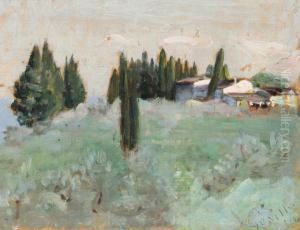Charles Paul Octavie Seailles Paintings
Charles Paul Octavie Séailles, often known just as Charles Séailles, was a French philosopher and art critic rather than a practicing artist himself. Born on January 14, 1854, in the commune of Auch in southwestern France, Séailles was primarily known for his work in aesthetics and the philosophy of art. He played a significant role in the intellectual circles of his time and was a contemporary of many artists and thinkers who were reshaping both the artistic and philosophical landscapes at the turn of the 20th century.
Séailles attended the École Normale Supérieure in Paris, where he was a student of the famous philosopher Victor Cousin. After completing his studies, he went on to become a professor, teaching philosophy. Throughout his career, Séailles wrote extensively on art, contributing to the understanding and critique of the art movements of his time. He was particularly interested in the psychological aspects of artistic creation and the subjective experience of art.
One of his notable works is a study on the artist Jean-Baptiste Greuze, titled 'Essai sur J.-B. Greuze' (1892), which reflects his interests in art history and aesthetics. Séailles's philosophical approach to art criticism was influential in the development of aesthetic theory in France. His work contributed to a greater appreciation of the emotional and intellectual responses to art, beyond the mere consideration of form and technique.
Despite his significant contributions to art criticism and philosophy, Séailles's work is not widely known today outside of academic circles. He died on April 23, 1930, leaving behind a legacy that is cherished by scholars interested in the intersection of philosophy and the arts. While his life was not marked by the creation of visual art, his intellectual endeavors helped shape the way art was understood and appreciated in his time and beyond.
